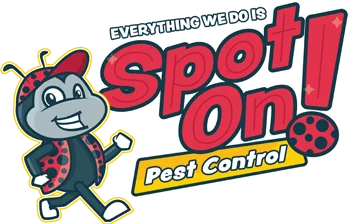Finding a bee colony near your home in Trinity can be alarming. Whether they’re buzzing around a tree in the backyard or crawling behind a wooden fence, seeing a large number of bees in one place usually means they’ve settled in. When it happens close to daily activity zones like patios, garages, or swing sets, it raises immediate concerns—especially for homes with kids or pets. Bees can become defensive quickly when disturbed, and even a single sting can become a serious issue for individuals with allergies.
The best time to deal with a bee colony is right when you notice it. These colonies grow fast, and the longer they stay, the more bees you’ll have to deal with. Ignoring the problem increases the chances of damage and raises the risk of someone getting stung. Prompt action helps avoid these outcomes and keeps your outdoor areas safe. Knowing how to spot signs early and respond in a calm, structured way makes a big difference in keeping your family and property secure.
Identifying A Bee Colony Near Your Home
Early detection is the easiest way to stop a bee problem from growing. The first step is learning how a bee colony looks and acts. They’re not always loud or super visible. Sometimes, you’ll only notice a trail of bees heading to the same spot on your property again and again. Other times, they may gather in trees or squeeze into gaps you wouldn’t usually pay attention to, like the space between panels on a shed or under roof eaves.
These are some of the clearest signs that you may have a bee colony nearby:
– Bees flying in and out of a single opening regularly
– A group of bees hovering or swarming around a specific area
– Clicking or buzzing sounds inside walls or behind outdoor structures
– Brown or yellow smudges near cracks or wood trim, which may be residue from honey or wax
It’s also helpful to know if you’re looking at bees or another kind of stinging insect. Honey bees are usually golden-brown and fuzzy. They tend to have a slower, more directed flight compared to wasps, which are sleeker, shinier, and more erratic in movement. Wasps also tend to be more aggressive, especially near their nests. Spotting the difference helps determine how urgent the problem might be.
In one Trinity neighborhood, a homeowner noticed bees lightly tapping against their bathroom window every morning. At first, they thought they were simply attracted to the plants below. A few days later, they realized the bees were entering a small hole near the roof line. By that point, the colony had grown large enough to produce noise inside the wall, and professional help was needed to safely remove it.
Don’t wait for louder buzzing or larger swarms. Pay attention to subtle changes and investigate any area with repeated bee activity.
Steps To Take Right After Finding A Bee Colony
Once you realize there’s a bee colony on or near your home, it’s important to stay calm and take smart steps to ensure safety. Don’t try to solve the issue yourself—handling bees without training can lead to injuries and worsen the situation. The goal is to keep everyone safe while minimizing disruption to the colony until our professionals can step in.
Here’s what to do right away:
1. Keep kids and pets away from the area. Even curious glances can result in unexpected stings if bees feel threatened.
2. Do not block entry points or attempt to seal off the hive. It might seem like you’re trapping them, but this can anger the bees and drive them to find alternate exits inside the home.
3. Avoid moving or running loud power equipment close to the colony. The vibration can cause a defensive reaction.
4. Don’t shine bright lights at night near the hive. Bees are usually dormant after dark, but artificial lights can still disturb them.
5. Give the hive space and limit outdoor activity in that area. Observe quietly from a distance only to monitor location and size.
If someone is stung, walk calmly away from the hive and treat the sting quickly. If there’s any sign of an allergic reaction such as swelling of the face or difficulty breathing, seek medical help right away.
Many people believe the bees might simply leave as the weather changes. That usually doesn’t happen quickly. Once they build a hive and start producing honey, bees become attached to that location. Waiting for a season to pass is not a good strategy—it usually ends with more problems and higher repair costs.
Taking the right steps early prevents bigger issues later. Focus on protecting your home’s entryways and common areas, and leave the removal process to trained professionals.
Why Professional Bee Removal Is the Safer Route
Trying to remove a bee colony on your own might feel like the faster choice, but it often brings more risk than reward. Whether the hive is above a doorway or lodged deep inside an attic wall, most homeowners don’t have the right gear or experience to approach the hive safely. A simple mistake—like bumping the structure or spraying the wrong thing—can trigger a swarm. In some cases, this leads to multiple stings, property damage, or injury.
Bee colonies are often larger than they appear. What may look like a small group of buzzing insects near a vent could be part of a much bigger network hidden inside walls or roofing. Without professional knowledge, it’s easy to miss how far the hive spreads or where the bees might escape if disrupted. That makes fumbling with tools, sprays, or makeshift covers a dangerous gamble.
Our professionals take a methodical approach to bee removal in Trinity. Every step is designed to protect you, your family, and your home. Here’s what the process typically includes:
– Inspection of the structure to locate the full extent of hive activity
– Identification of entry and exit points, including any hidden openings
– Removal of the bees using controlled, low-impact methods that avoid aggressive swarming
– Clean-out of hive material like wax and honeycomb to avoid attracting other pests
– Sealing of entry points once the colony is removed to prevent return visits
When handled properly, removal doesn’t damage the structure or scatter the colony. More importantly, it helps ensure bees don’t find a way back into your home a few weeks later. Our professionals also provide advice on what to repair or adjust to close off vulnerable spots and discourage new colonies from forming.
Preventing Bee Colonies Around Your Home
Once a colony has been taken care of, it’s important to think about long-term prevention. Bees are always looking for safe, quiet spots to build their hives—and certain features around your property can invite them back unintentionally. Cracked siding, gaps in wood trim, or overlooked attic vents can serve as open doors.
To minimize chances of another colony settling in, homeowners in Trinity should:
– Inspect the exterior of their home for any gaps or openings bees could access
– Patch or seal cracks in structures near trees, sheds, and fences
– Replace broken screens or vent covers around basements, attics, or utility entries
– Keep outdoor garbage cans sealed and place them away from doorways and garages
– Trim vegetation that’s too close to the home or hangs over the roof
– Empty standing water from containers like bird baths, pots, and pet bowls regularly
– Clean up any wax or residue left behind after removal
One homeowner near Lake Street struggled with repeat bee problems even after hiring removal services. After the hive was cleared out for the second time, they discovered an old vent behind a storage bin where bees had easy access. Once repaired and sealed, they had no further issues. Regular upkeep like this goes a long way in preventing a repeat situation.
Preventing bees from building a new hive comes down to limiting their access and removing what attracts them, such as quiet crevices, food sources, and water. If you’re unsure where the weak spots around your home might be, our technicians can help evaluate those areas and offer practical prevention plans.
Keeping Your Home Safe from Bees in Trinity
Bee colonies can go from a minor concern to a real threat in a short amount of time. The key is acting quickly before the hive grows larger and the risks increase. Early signs like buzzing, residue near cracks, or repeated fly-in paths should never be brushed off. Recognizing those clues helps protect your home and avoid unnecessary costs down the line.
Staying safe involves more than just spotting a colony. You need to know how to respond appropriately, avoid stirring up the hive, and contact professionals who can remove the colony safely. After that, steps to block future entry points and make the property less attractive to swarms will reduce the likelihood of a return.
If a bee colony has settled near or inside a wall, roof, or shed on your property in Trinity, don’t wait. The longer it stays, the more likely it will grow and cause problems. Acting early and letting trained professionals step in makes all the difference when it comes to safety and peace of mind.
For homeowners in Trinity who notice a growing bee colony, acting quickly can help avoid further risks and unexpected expenses. Spot On Pest Control, LLC understands the challenges of managing such situations, and you can learn more about how we approach safe and effective bee removal in Trinity to protect your home. For a quick estimate or to book a service, please contact us today.



